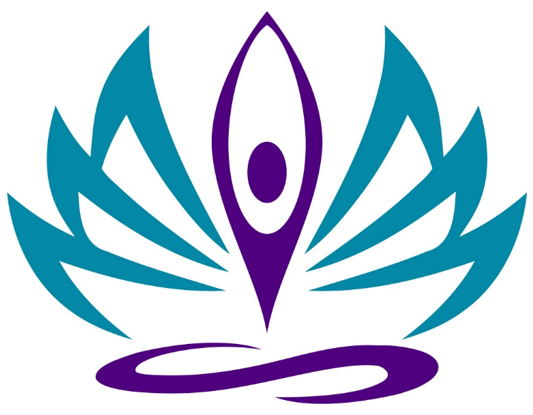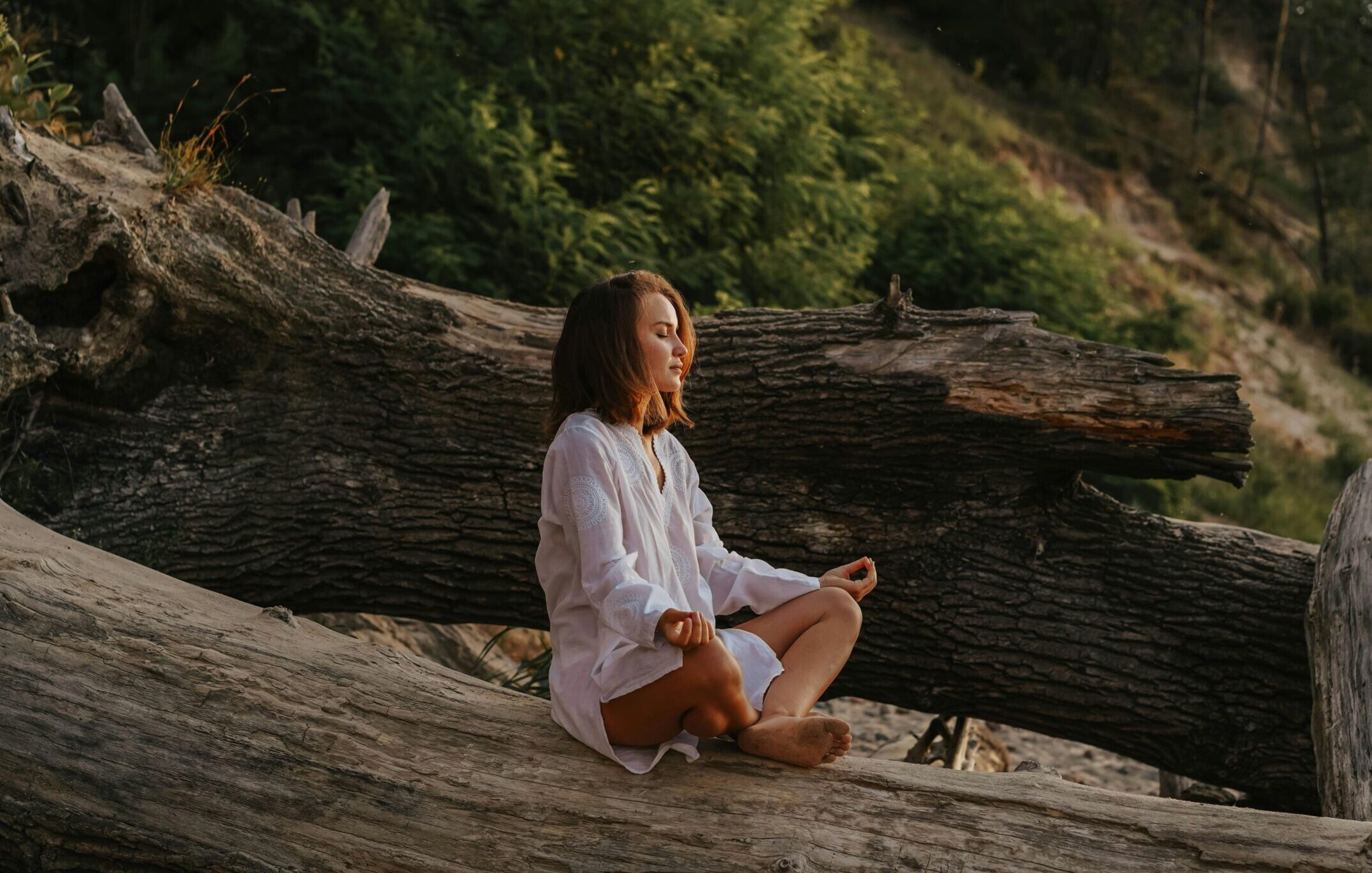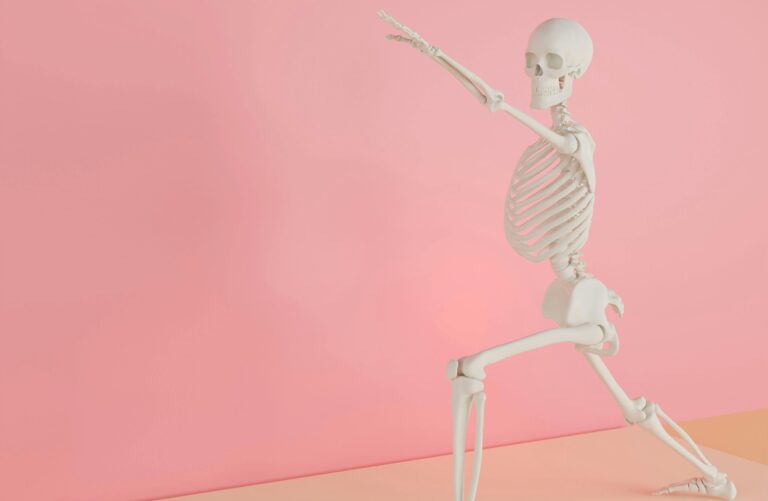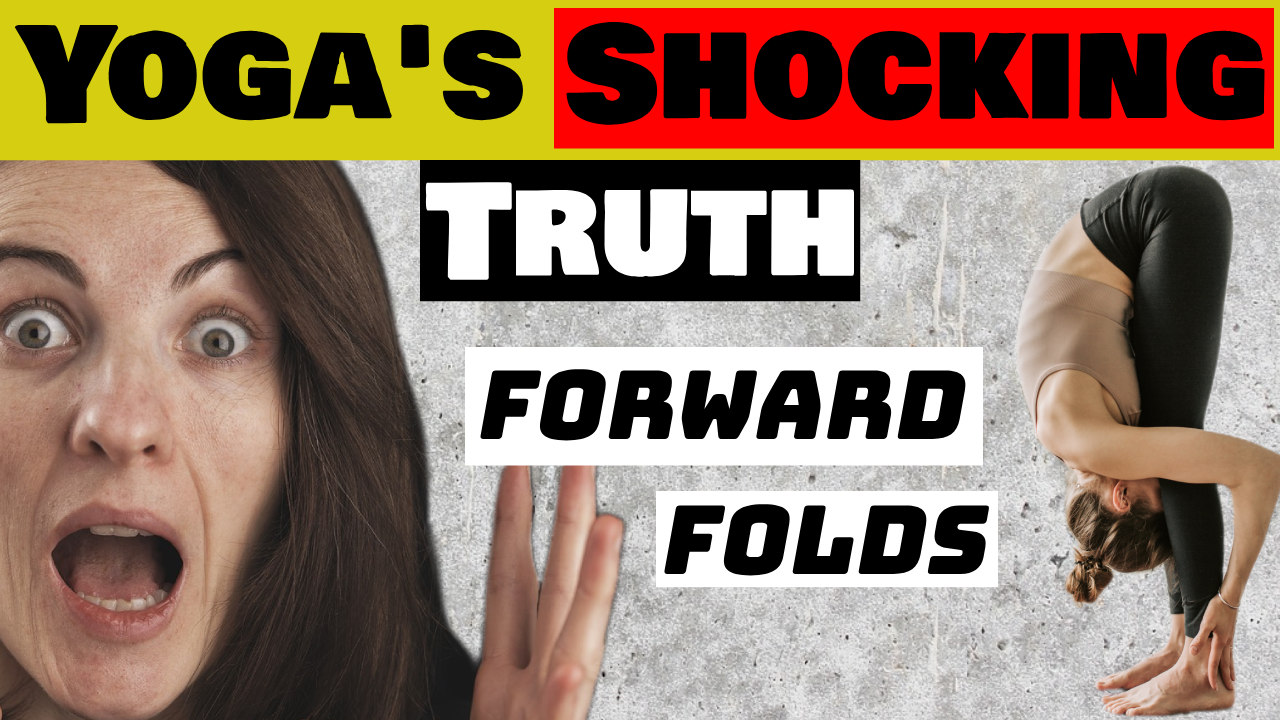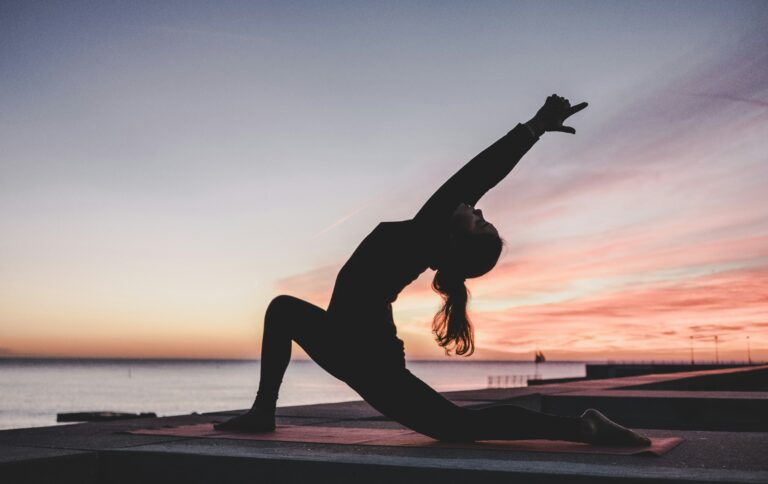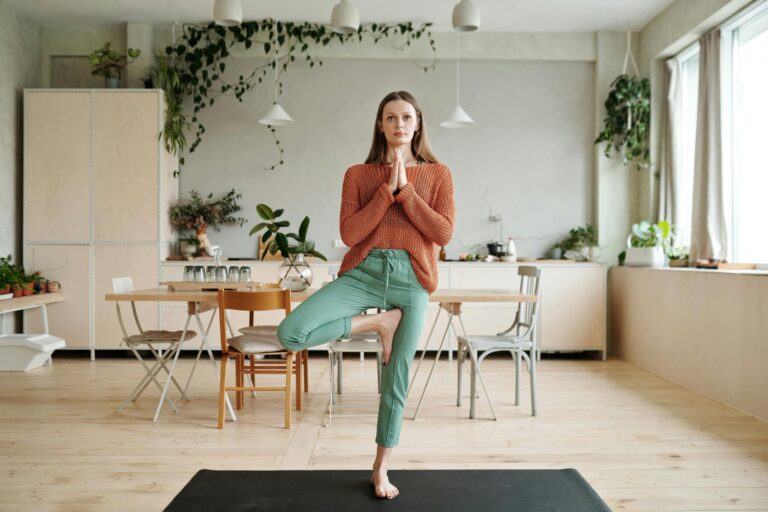Grounding for more length in the spine: how you can improve your posture with targeted yoga exercises
Yoga practice is not just about Flexibility, mobility and Strengthbut also about the connection between body, mind and earth. One of the basic techniques that helps us to experience more awareness and length in the spine is the concept of the Earthing. But what does it actually mean to ground yourself and how does this practice help to stretch the spine?
What does earthing mean?
Grounding in yoga refers to the conscious connection of the body to the ground - both physically and energetically. It is about finding a stable base and refining body awareness in the feet, hands and pelvis. This strengthening of body awareness enables better body control, which leads to both better posture and increased mobility. Furthermore, grounding gives us energetic support and a sense of security, which helps us to release muscular tension and calm down.
Why is grounding important for the spine?
The spine is the center of our body and carries us through everyday life. A grounding practice ensures that we push ourselves off the ground better and thus straighten the spine better, activate the muscles around the spine and at the same time take the pressure off the joints.
Grounding creates stability and uprightness through the principle of prana and apana. Apana means that we send air/life energy into the lower parts of the body and prana describes the air/life energy in the upper half of the body. Prana and apana interact with each other. If we strengthen one, we also receive more of the other. Similar to breathing: the deeper we breathe in (we breathe prana/apana: air/life energy), the more we can breathe out. If we apply this principle to grounding, then we get more uprightness in the upper half of the body through more grounding/pressure down into the ground. This leads to more length and freedom in the spine. A deep grounding helps to release the heaviness of the body into the floor and at the same time promote lightness in the spine.
How can you use grounding in your yoga practice?
Various yoga exercises have a grounding effect or support your feeling of being grounded. I have recorded an entire yoga class for you on the topic of improving posture through grounding. Let me guide you through a 90-minute practice now:
If you don't have 90 minutes or would rather practice for yourself, you can find some grounding yoga exercises here:
1. the mountain (Tadasana) - finding the base
Tadasana, also known as 'mountain pose', is one of the simplest but most effective poses for feeling grounded. Stand with your feet hip-width apart and distribute your weight evenly on both feet. The toes should be relaxed and slightly apart, while the heels and the balls of the big and little toes are firmly anchored to the floor. Make sure that you lift your pubic bone slightly and keep your pelvis in a neutral position. Your upper body is upright, your shoulders are relaxed and your head is in line with the rest of your spine.
In this position, feel how your feet are connected to the floor, which gives you a strong base for your entire body. At the same time, your chest opens up and the length of your spine can gently unfold.
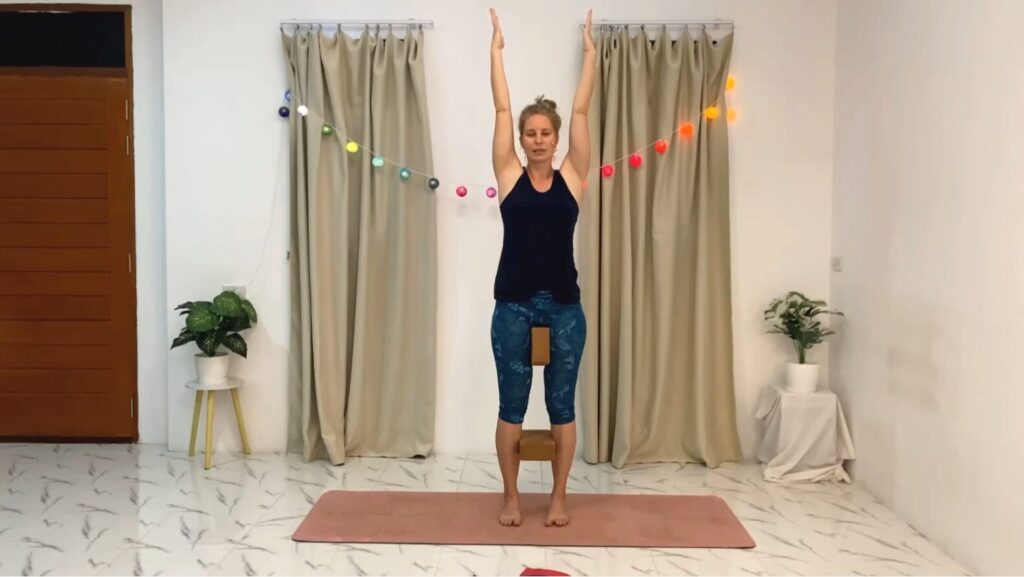
2. downward facing dog (Adho Mukha Svanasana) - length and strength
Downward-facing dog is a powerful yoga pose that combines grounding and length. Start in a plank (plank position) and then push your buttocks up into the air so that your body forms an inverted V. Make sure that you press your hands firmly into the floor, keeping the Shoulders rolled away from the ears you activate your thighs and gently press your heels down. The grounding muscle activation together with the force of gravity pulls your spine in length, which often leads to a feeling of release.
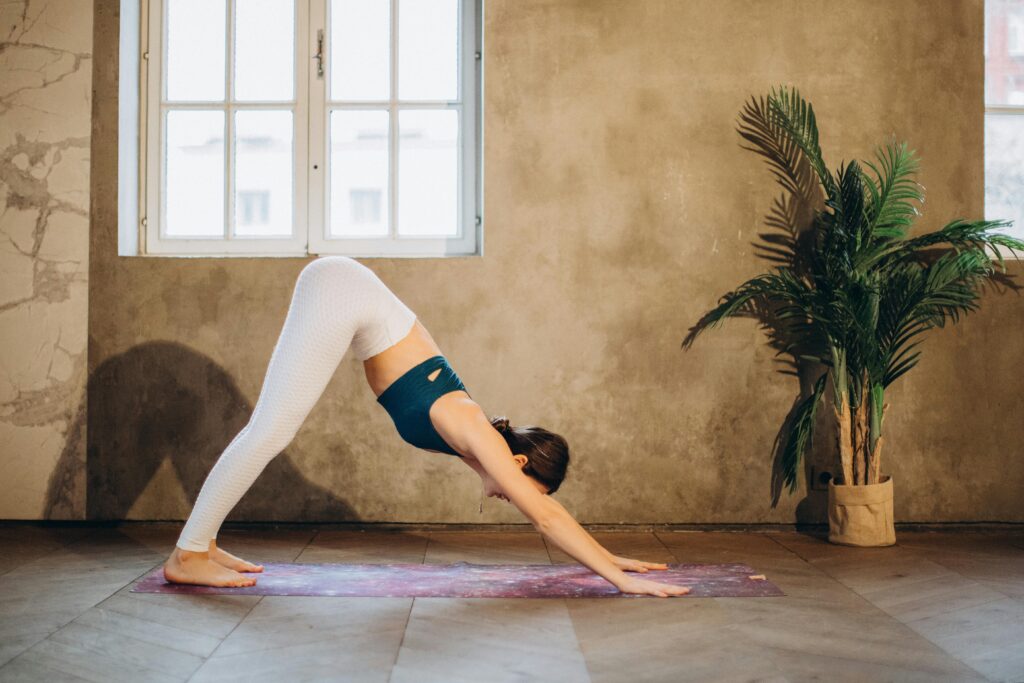
3. warrior I (Virabhadrasana I) - stability and alignment
Warrior I is all about finding stability in your legs while simultaneously straightening your spine and stretching the surrounding muscles. Make sure that your front knee remains over your ankle and your back leg is extended. Press your feet firmly into the floor while simultaneously straightening your pelvis and spine.
Grounding in the feet and legs supports the straightening of the spine and makes it appear longer and freer. The arms are either stretched upwards or in a gentle variation, which reinforces the energy along the spine.
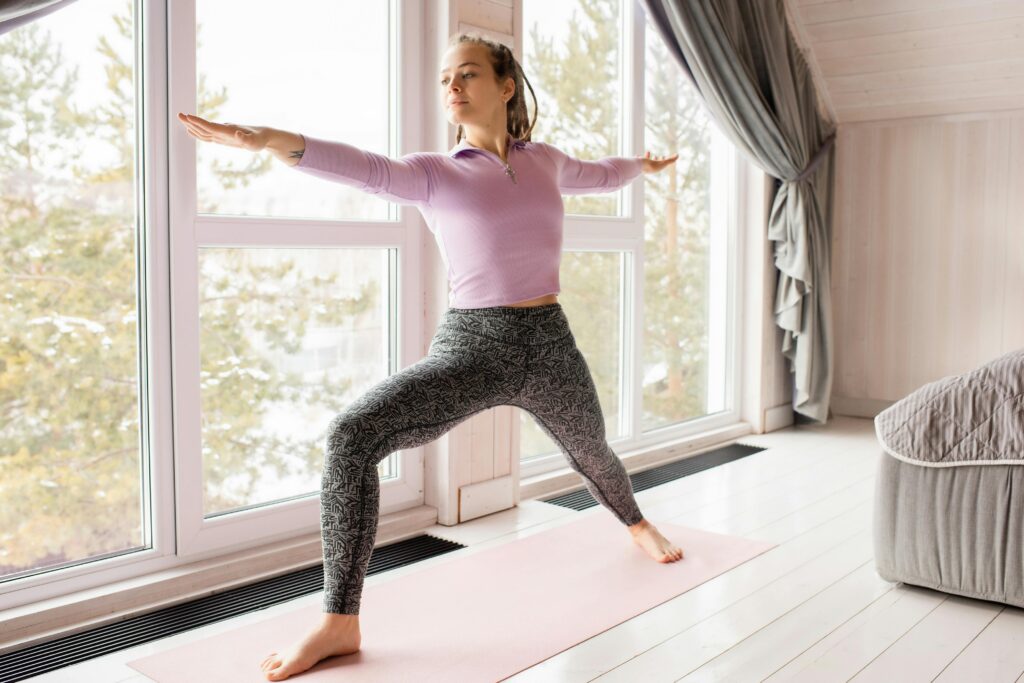
Conclusion: Grounding as the key to a longer spine
An upright posture requires stability, and grounding creates exactly this foundation. By using the energy of the ground, you can lift your spine and unfold it to its natural length - without excessive tension or pressure (principle of Prana and Apana).
If you regularly pay attention to grounding in your yoga practice, you can not only improve your posture, but also release tension and experience greater mobility and freedom in your spine in the long term. So use the power of the earth to relieve your spine and bring it back to its natural length - both in yoga and in everyday life!
